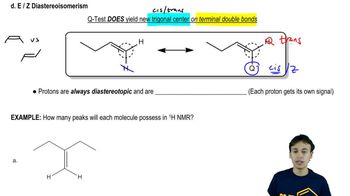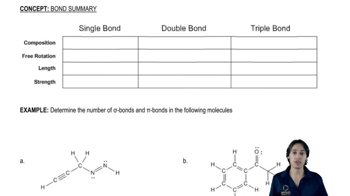Draw and name all stereoisomers of 3-chlorohepta-2,4-diene
b. using the E-Z nomenclature.
 Verified step by step guidance
Verified step by step guidance Verified video answer for a similar problem:
Verified video answer for a similar problem:



 4:28m
4:28mMaster How to name different types of double bonds or rings with a bite sized video explanation from Johnny
Start learning